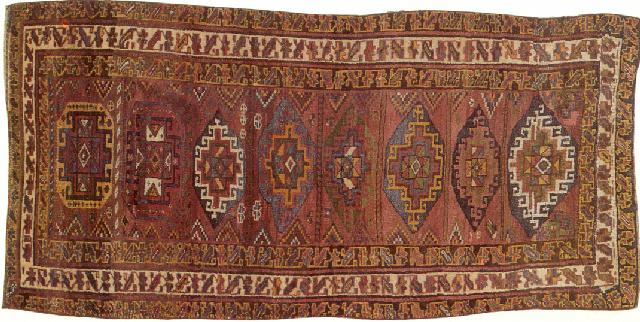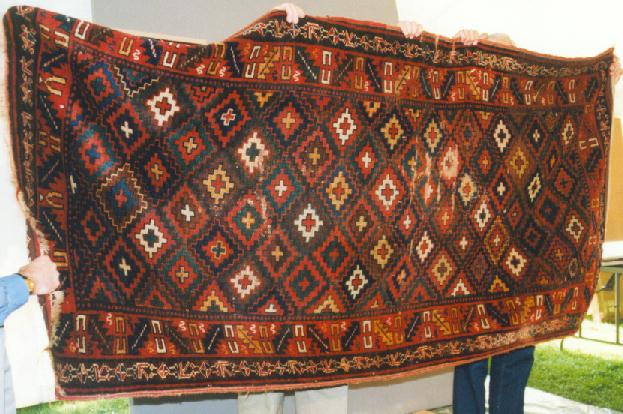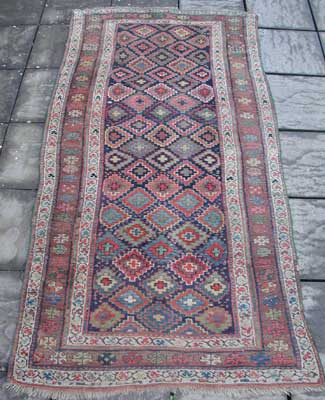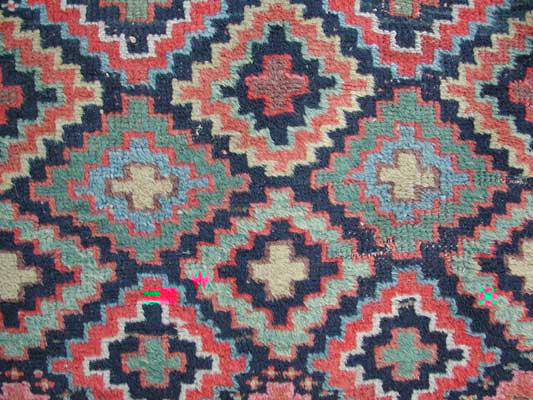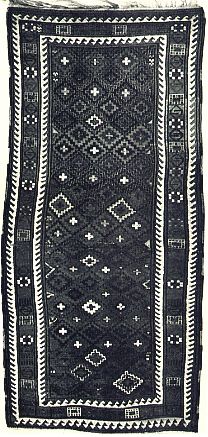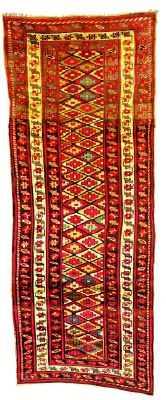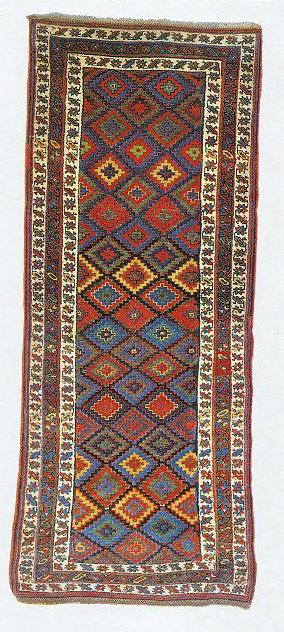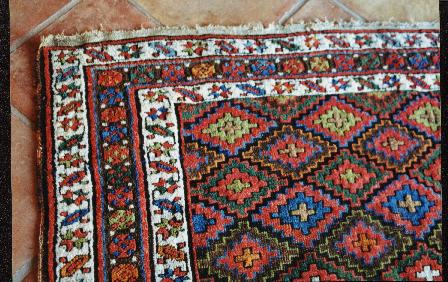Dear Turkotek,
As some of you know, I am a collector of embroideries, but I do have an "old" rug or two.
I am, at the suggestion of Steve, posting this rug with a couple of
comments about its origin.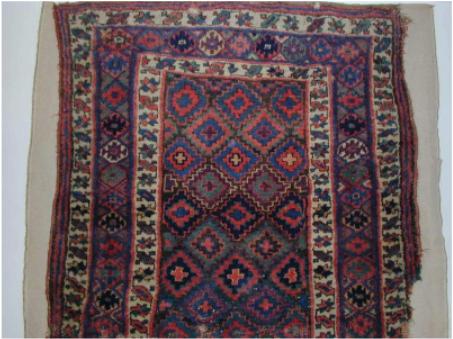
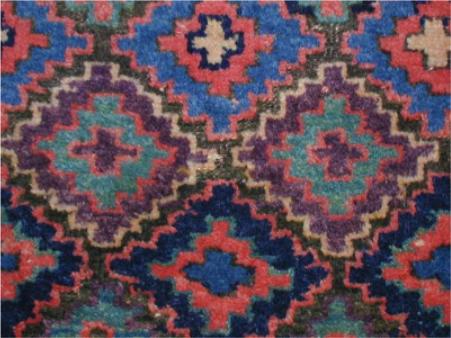
This carpet
is one of a lot of three Kurdish rugs found in a village on the West Bank
some years ago. The story is that the father of the grandfather (this
might be just a statement meaning, one of our forefathers, and not
necessarily three generations ago) bought the carpets while at Mecca for
the Haj. It seems that many pilgrims bought carpets with them to sell, as
a form of ready cash, to help finance the trip. The other two carpets were
in very very good condition and expensive and this one with some damage
was within my budget especially as the dealer had already earned his
profit on the other two. And anyway my eye trained for natural colors in
embroidery was pleased with the palette and assumed it was a good one. I
preferred it to the other two in any case colorwise - but that may be a
typical response of you like what you can have. (I also like some of the
carpets at the MAZ in Vienna). 
I am of course prepared to hear otherwise about the colors, otherwise I wouldn't post the piece.
The second point is the idea that there is a direct correlation between the length of the pile and the micro-climate of the area it was woven in.
Or to say it in the way the dealer put it "the higher up the mountain the longer the pile in Kurdish rugs." Any response on this????
I sewed the rug onto a heavy canvas back to conserve it.
Sincerely
Richard Farber
Thanks to Dr. Berkovich who photographed the rug.
